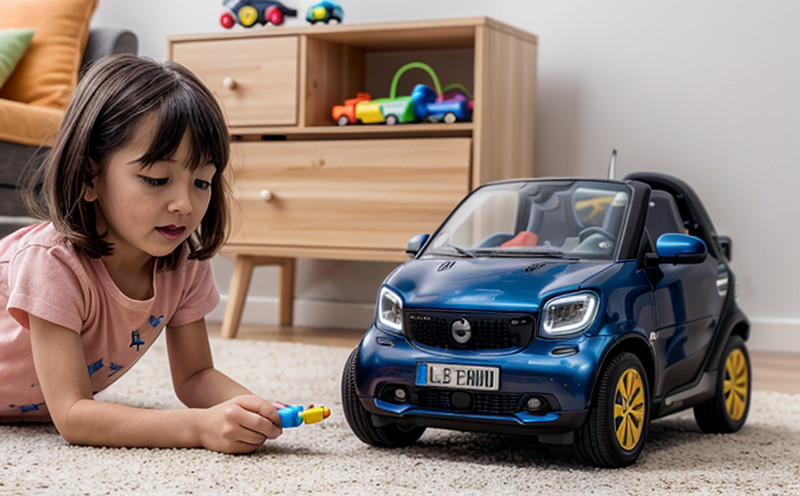UL 2900-2-2 Cybersecurity for Network-Connected Toys
The UL 2900 series of standards is a comprehensive suite designed to address the cybersecurity challenges posed by network-connected consumer products. Specifically, UL 2900-2-2 focuses on the cybersecurity requirements for smart and connected toys. This standard ensures that these toys are secure against unauthorized access, data breaches, and other potential cyber threats.
The toy industry is rapidly evolving, with an increasing number of products incorporating advanced technologies such as Bluetooth, Wi-Fi, and cellular connectivity. These features allow children to interact with the toy in innovative ways but also introduce new risks related to cybersecurity. UL 2900-2-2 aims to mitigate these risks by providing clear guidelines for manufacturers to follow.
The standard covers a wide range of security measures that must be implemented, including:
- Encryption of data both in transit and at rest
- Password management policies
- Data integrity checks
- Secure update mechanisms
- Access control
- Vulnerability assessments and remediation plans
Manufacturers must undergo rigorous testing to ensure compliance with these requirements. This includes both laboratory-based tests and simulated real-world scenarios. The UL 2900-2-2 certification is a testament to the manufacturer's commitment to cybersecurity, providing parents and consumers with peace of mind.
The standard also emphasizes the importance of continuous improvement in security practices. As new vulnerabilities are discovered or as technology evolves, manufacturers must adapt their security measures accordingly. This ongoing process ensures that even after initial compliance, toys remain secure against emerging threats.
UL 2900-2-2 is part of a broader initiative by Underwriters Laboratories (UL) to protect consumers from cyber risks. By adhering to these standards, manufacturers contribute not only to their own reputation but also to the overall safety and security of network-connected toys in the marketplace.
Why It Matters
The cybersecurity of network-connected toys is crucial for several reasons:
- Data Protection: Smart toys often collect personal information, such as voice recordings or location data. Ensuring that this data is protected from unauthorized access is essential.
- User Privacy: Children using these toys are at risk of their privacy being compromised. Compliance with UL 2900-2-2 helps safeguard their personal information.
- Brand Reputation: A breach in a toy's cybersecurity can severely damage the brand's reputation and lead to loss of consumer trust.
- Liability Issues: Non-compliance with cybersecurity standards may result in legal consequences for manufacturers.
The standard also addresses broader societal concerns, such as reducing the risk of cyberattacks that could target children. By promoting robust security measures, UL 2900-2-2 helps create a safer environment for consumers.
Environmental and Sustainability Contributions
While the primary focus of UL 2900-2-2 is on cybersecurity, it also has environmental implications:
- E-Waste Reduction: By ensuring that toys can be securely updated without needing replacement, this standard helps reduce electronic waste.
- Resource Efficiency: The secure update mechanisms allow for more efficient use of resources, as manufacturers can release bug fixes and improvements without producing new hardware.
The UL 2900-2-2 certification also promotes sustainable practices by encouraging the use of secure components that are less prone to obsolescence. This helps extend the lifecycle of network-connected toys, further reducing waste and resource consumption.
Use Cases and Application Examples
| Use Case | Description |
|---|---|
| Data Encryption | Data encrypted both in transit and at rest to protect sensitive information. |
| Password Management Policies | Strong password policies enforced to prevent unauthorized access. |
| Vulnerability Assessments | Ongoing assessments of potential vulnerabilities identified and mitigated promptly. |
| Data Integrity Checks | Ensuring that data has not been altered during transmission or storage. |
| Secure Update Mechanisms | Safe updates to the toy's software, ensuring it remains secure against new threats. |
| Access Control | Strict access controls implemented to limit who can interact with the toy and its data. |
The following are some real-world application examples:
- Educational Toys: Smart educational toys that allow children to learn through interactive games. Compliance ensures these devices do not pose a risk to user privacy or safety.
- Voice-Activated Toys: Toys that respond to voice commands, such as virtual assistants within the toy. These must be secure to prevent unauthorized access or data misuse.
- Location-Based Services: Toys equipped with GPS features for tracking and locating lost toys. Security measures protect children's privacy and ensure accurate location information is not misused.





